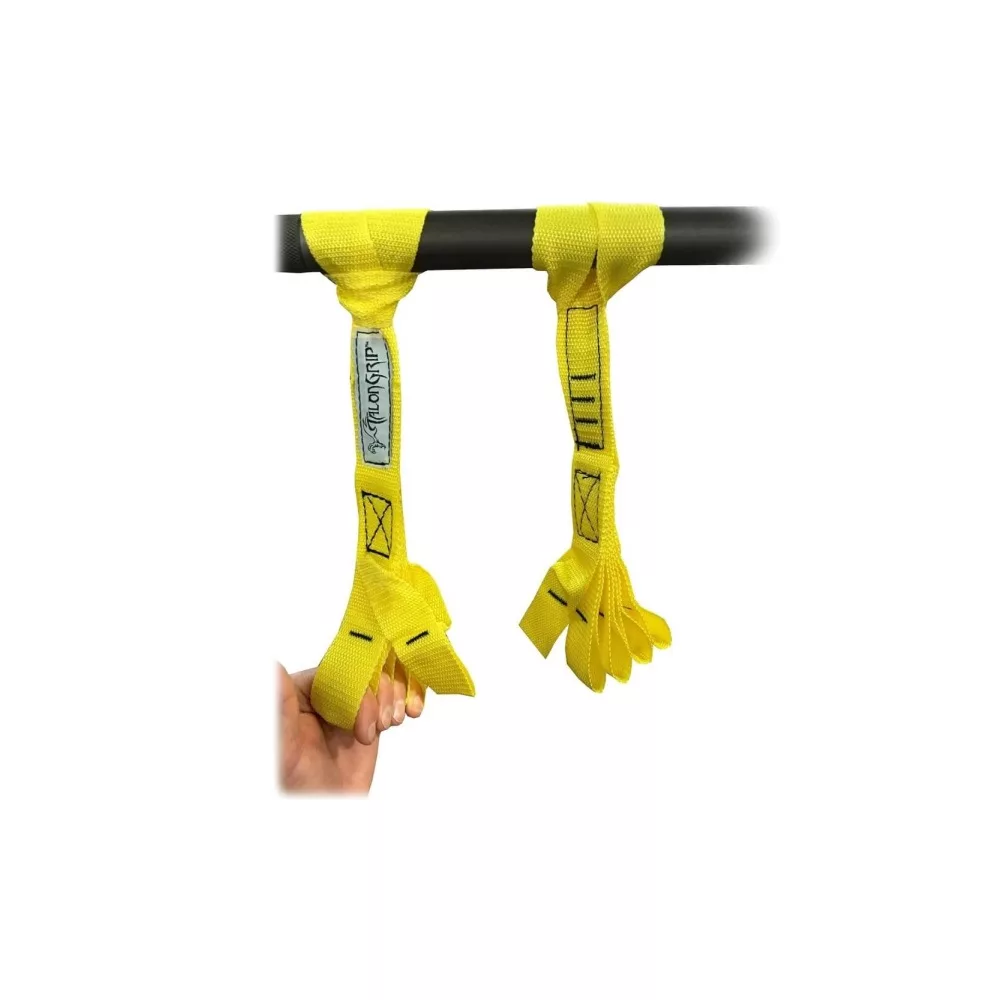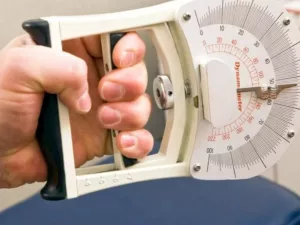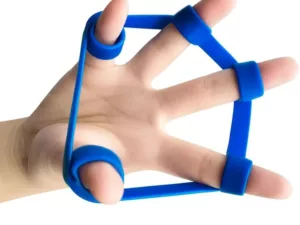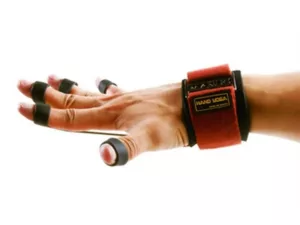(Last Updated on October 9, 2025 by Henry)
Squeeze & Don’t Let Go
Getting my head around support grip training has opened a whole new world of strength for me, and I want to share that with you.
Support grip is all about how your hand holds onto things without letting go, like when lugging heavy bags or hanging from a pull-up bar.
It stands apart from other types: crush grip, where you squeeze an object like a handshake, pinch grip with your fingertips, or extension grip, which involves opening your hand wide against resistance.
For athletes, especially those who lift weights or scale climbing walls, mastering a support grip is no joke.
This grip builds up strength crucial for carrying heavy loads and maximizes performance in exercises like deadlifts and pull-ups. Improving your support grip helps cut down on muscle fatigue, letting you go the distance in your workouts.
Having a wimpy support grip can spell trouble. Notice those lifts that slip away from you halfway up? Or that lingering soreness in your forearms after a tough session? That could be down to neglecting this key grip style, leading to tired muscles and potential injuries that nobody wants to face.
The cool thing is, adding some basic support grip training into your routine can make a big difference. Whether you’re a casual gym-goer or aiming to smash your personal best in lifts, building up your grip strength can give you the edge. So, let’s get that grip sorted and holding strong!
Anatomy of Support Grip & Forearm Muscles
Now, let’s talk about the anatomy that powers your support grip. Understanding how your hand and forearm work together can be a game-changer when it comes to flexing your grip muscles. At the core of it all is a well-coordinated set of bones, joints, and muscles that lets you hold onto things tightly.
Starting with the basics, your hand and wrist are built tough. The bones in your hand, like metacarpals and phalanges, connect with your wrist through a network of joints. These guys are pretty much your support team when you’re hefting weights or gripping a bar.
Now, the real stars here are the muscles, particularly the flexor digitorum profundus and flexor digitorum superficialis. These muscles run along your forearm and are responsible for bending your fingers and keeping that grip tight. Think of them as the driving force behind your ability to bear loads for a good amount of time.
There’s also a host of stabilizers in your forearm that keep everything in check. These muscles work together to maintain grip endurance, meaning you can hold on longer without caving in. Training these stabilizers is key, as they provide the unwavering support your hands need during intense sessions.
Whether you’re carrying weights or just toting groceries, understanding these muscles means you can train smarter and prevent potential issues. Keep in mind that boosting your grip isn’t just a one-muscle show, but a symphony involving every part of your hand and forearm.
Assessing Your Support Grip Strength
Figuring out where you stand with your support grip strength is where things get practical. I’ve found that a few simple self-tests can give you a real sense of how well you’re doing, and it doesn’t need to be complicated.
One go-to test is the timed dead hang. Just hang from a pull-up bar and see how long you can hold on. It’s basic but very telling. Another method involves farmer’s carries, where you hold weights in each hand and walk a set distance: gotta love the burn on that one. Static barbell holds are another tool in your toolbox; just load up a barbell and see how long you can keep it in your grip.

Finger Loops with Thumb Loop To Train Static Grip

Seize the New Angle to Train Fingers with Finger Loops

Rugged Finger Loops: Simple Solution to Train Static Grip
While you’re testing, keep an eye out for warning signs. Struggling to hang or carry for even a short time? Grip slipping during pull-ups or heavy carries? These might be red flags signaling weak grip muscles that need some work.
Now, if these tests reveal more concerns or you feel something’s really off, don’t ignore it. That’s when it’s smart to hit up a professional who can give you the right guidance and evaluation. Tracking your progress with these tests over time can help you know if you’re on the right path and where adjustments are needed.
To make the most of your grip assessment, start charting your grip duration and weight capacity. Record how long you hold the bar or how much weight you carry. With regular checks, you’ll have a clear picture of your improvements and know when to step things up a notch.
Warm-Up and Mobility for Support Grip
Jumping straight into heavy lifting without warming up? Not the best idea. A solid warm-up routine focusing on your wrists and forearms is crucial. It’s all about prepping your muscles and joints to handle the stress, and it starts with simple techniques.

Wrist circles are a great way to get the ball rolling. Just make circles with your wrists, loosening them up.
Move them clockwise and counter-clockwise a few times to get those joints smooth and ready.
Forearm stretches should definitely be on your list, too. Bend your wrist gently with your other hand until you feel a stretch, holding it to ease any tightness. Flip your hand and stretch the forearm the other way to keep things balanced.
Banded finger extensions add another layer to your warm-up. With a small resistance band around your fingers, extend them open and closed, waking up the muscles that often get overlooked. These small movements do a big job in preventing overuse strains.
The goal here is to heat up those muscles before they face full weight. Starting slow and building the intensity gradually is key.
And remember, don’t rush into the heavy holds or extreme stretches cold. Trying to lift too much too soon is a shortcut to strains and sprains.
Make warm-ups a regular part of your routine, ensuring your body is set for optimal performance. Taking this short time at the start means fewer injuries and better results when you get into the real work ahead.
Strength Training for Support Grip
Taking your support grip to the next level? You’ll need a solid strength training routine. I’ve found that the right mix of exercises is crucial for building that rock-solid grip you can count on.
Bar and pull-up work is where it’s at for grip enhancement. Dead hangs are a staple; just hanging from a bar improves endurance. For something tougher, try towel pull-ups. Grab a towel draped over a pull-up bar and crank out some reps. Or, mix things up with thick bar holds if you have access to one, giving those hands a real challenge.
Free weights are grip gold. Farmer’s carries and suitcase carries are top-notch. Load up with weights in each hand for farmer’s carries, or just one side for suitcase carries, strengthening the grip one carry at a time. Trap bar holds also make the list, a great way to load up and hold steady.
Odd objects and strongman tools keep things interesting. Nothing tests grip like sandbags or stones. Wrestling with these irregular loads really amps up your grip strength. If you can find a keg to lift, even better, adding a new twist to your routine.
This is all about progressive overload. Gradually up the ante by adding more weight or extending the time you hold on. Frequency is key, aiming for grip work a couple of times a week, making sure to fit in adequate reps and sets.
Remember, building grip strength isn’t an overnight deal. Stick with these exercises, keep pushing those limits, and your grip will just keep getting stronger.
How Support Grip Boosts Sports & Daily Life
Building a strong support grip isn’t just for the gym; it has real-world applications that can’t be overstated. This grip plays a major role in various sports, acting as the unsung hero in many different activities.
Take deadlifts or pull-ups, for example. A solid grip ensures you can complete your set without your hands giving out before your muscles do. Climbers benefit massively, needing that grip to hold on to the smallest of holds. For those into wrestling or Brazilian Jiu-Jitsu, gripping and holding your opponent becomes second nature with a well-trained support grip.
Beyond sports, everyday activities get a boost too. Think about carrying groceries or handling manual labor tasks; a better grip means less fatigue and more efficiency. Even lifting awkward items around the house becomes easier, thanks to increased grip strength.
The benefits compound when you combine support grip training with pinch and crush grip exercises, developing harmonious hand strength. It ties everything together, helping prevent muscle imbalances and ensuring your hands are ready for whatever life throws your way.
So whether you’re scrapping it out in a competition, tackling your daily chores, or aiming to lift heavier at the gym, a strong support grip is your secret weapon. It’s your silent partner in strength, making your life both inside and out of the gym a whole lot easier.
Injury Prevention and Rehab Applications
Training your support grip is as much about preventing injuries as it is about building strength. Common issues like forearm strains, tendonitis, and elbow pain can surface if you overdo it or neglect the signals from your body.
It’s key to recognize the warning signs of overuse fatigue. Persistent aches or sharp pain after working out, especially if they linger, need attention. Pushing through this type of discomfort often leads to more serious injuries, setting your training back even further.
When it’s time for recovery, incorporating drills focused on rehabilitation can make a huge difference. Light dead hangs are great. They promote blood flow and a mild stretch without excessive strain. Banded extensions work wonders too, gently improving flexibility and strength in your forearms.
Another old-school remedy is rice bucket exercises. Stick your hands into a bucket of rice and move them around, simulating grip movements. It’s simple but highly effective, helping in gently rebuilding strength without risk.
Using the right gear also supports recovery and prevention. Lifting straps reduce grip load during heavy lifts, while chalk can improve grip without spasming your hands. If recovery’s the game, wrist wraps and braces play a big role, offering support and relief as you rehab your grip back to form.
Remember, the smarter you train, the faster you’ll bounce back from any setbacks. Paying attention to your grip’s health doesn’t just help you lift more; it helps keep you lifting all the way down the line.
Programming Your Support Grip Routine
Creating an effective support grip routine is easier than you might think. The trick is mixing it up and making sure everything you do contributes to stronger performance. When developing your routine, consider where you stand: beginner, intermediate, or advanced.
For beginners, keep it simple with a focus on basic exercises like dead hangs and farmer’s carries. Start with two sessions a week, allowing your muscles time to adapt. As you gain confidence, start upping the weight or duration.
Intermediate lifters should aim for three sessions a week.
Incorporate more complex exercises like towel pull-ups or thick bar grips.
Progressive overload is key:
gradually adding more weight or extending your holding time to keep challenging those muscles.
Advanced athletes can handle more volume and intensity.

Try strongman tools like kegs or sandbags and mix them into four sessions a week. Remember to balance intensity with recovery; overdoing it can lead to burnout or injury.
No matter your level, integrating support grip training with your full-body workout plan is crucial. Allocate specific days for grip work and avoid heavy grip exercises on back-to-back days; your recovery will thank you.
Track your progress with tools like a grip endurance timer or keep a log of your carry distances and weights. This not only motivates you but also provides a clear record of how far you’ve come and where to adjust.
Tailoring your schedule to include varied, consistent training ensures you’re not just building a better grip but boosting your overall strength and performance.
Conclusion and Next Steps
So here we are, at a point where you can appreciate the benefits of integrating a support grip into your workouts. It increases endurance, strengthens lifts, and cuts down injury risks. But it’s more than just isolating your grip: understanding how it connects with other grip types ensures well-rounded hand strength.
Diving into this kind of training opens doors not just to lifting more but to doing more in everyday life, whether it’s hitting your personal best in a lift or holding onto bags without breaking a sweat; every little gain counts.
Incorporating support grip exercises is straightforward but requires dedication. Treat them as you would any other essential part of your fitness routine. It’s about making these efforts a constant companion to the rest of your training regime.
To help along the way, I’ve found a few resources like pull-up bar reviews, tips on using wrist rollers, and guides for selecting the right farmer’s carry tools that can elevate your grip efforts even more. A good place to start would be exploring those options and integrating them into your regimen.
Now’s the perfect time to jump in. Start with what you have and keep building. Just remember, improvement takes time and consistency. Dedicate yourself to the journey, and those grip gains will come.
Thanks for Stopping By
Have Questions?
Please Leave A Comment






